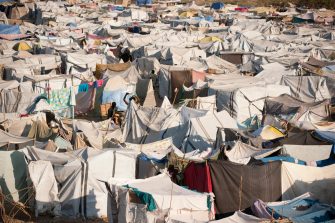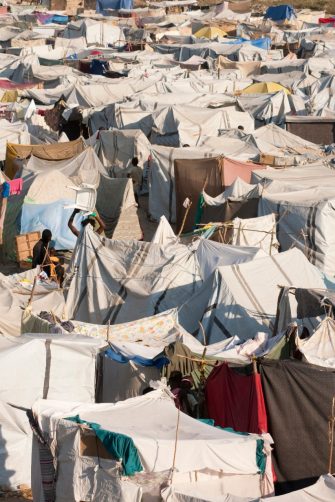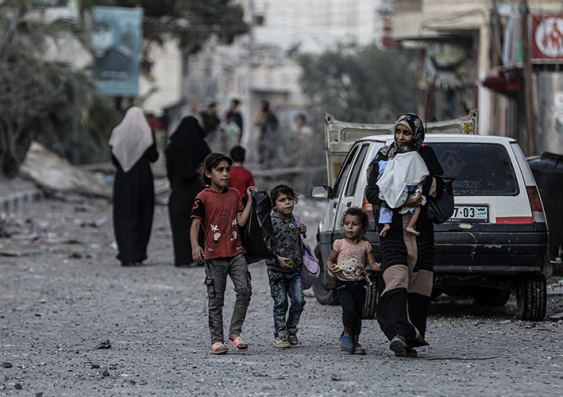Recent conflicts in Afghanistan, Ukraine, Sudan and Gaza have displaced large numbers of people. In each case, Australia’s humanitarian response has been different. Some people have been able to acquire a visa and travel to Australia relatively easily; others have been stuck.
Once here, wildly varying visa entitlements mean some people have access to work rights, health care and other services; others are barely surviving.
In a new policy brief, we argue the Australian government should create a new emergency visa for humanitarian crises.
We believe the government needs a more streamlined, equitable, predictable and effective response to assist people facing a real risk of persecution, extreme danger or other serious harm.
An ad hoc approach to emergencies
To date, Australia has used at least 25 different types of visas to respond to humanitarian emergencies. This has resulted in varying outcomes for those affected, as well as significant distress for diaspora communities in Australia concerned for the safety and welfare of loved ones stuck abroad.
While the use of different visas has provided the government with flexibility, it has led to ad hoc and inconsistent approaches. It has also added to challenges and inefficiencies within the visa processing system.
For instance, no special humanitarian visa has been announced for people fleeing conflicts in Gaza or Sudan, though Tony Burke, the new minister for Home Affairs, has indicated he is looking at ways to allow Palestinians to stay here longer.
Large numbers of Palestinians have been refused visitor visas due to security concerns and, arguably, the politicisation of humanitarian assistance.
In any case, visitor visas are far from an ideal response in such cases. They are intended for a short, temporary period and do not give people access to any government services or social supports.
What’s wrong with other existing visas?
One of the problems with existing visas is that even those designed for emergencies can be too slow to provide urgent protection. In addition, they typically help only a small number of individuals in immediate danger.
Many visas are issued on a wholly discretionary basis. People must be invited to apply for them, and they cannot transition to a more permanent visa unless the minister permits them to do so.
In some cases, special visa arrangements have been created for particular groups of people, such as Kosovar refugees in the late 1990s. By contrast, no special humanitarian visa regime has been created for people fleeing conflicts in Gaza or Sudan.
The visa situation does not need to be this complicated. Yes, it can be reassuring for people to know there is more than one way to find safety in Australia. However, a preferable option would be to have an emergency visa that enables people to reach Australia lawfully and quickly, with a clear pathway to a long-term solution.
What should an emergency visa look like?
An emergency visa should enable people at risk to travel to Australia quickly and safely. Eligibility should be determined on the basis of sound and defensible principles, and guided by good practices from other countries and our own history.
For example, the government could identify eligible classes of people in need of humanitarian emergency visas. Relatives and diaspora communities in Australia could assist in identifying those with connections to Australia (such as family members, past residents and people with links to Australian companies or organisations).
This recommendation aligns with past practices of designating a particular cohort of people for protection. For instance, Australia’s former special assistance visa category (in use from 1991–2000) provided resettlement opportunities to categories of people with connections to Australia. This included those from the former Yugoslavia and Soviet Union, East Timor, Lebanon, Sudan, Myanmar, Vietnam, Sri Lanka and Cambodia, as well as Ahmadi Muslims.
An emergency visa should provide for an initial stay of 12 months. While this is shorter than some comparative visas, it would provide some certainty for people and allow for a reassessment of the circumstances in their country of origin after a year. At this point, they could either return voluntarily. Or, if it’s not safe to do so, they could be granted a pathway to permanent residence in Australia.
Emergency visas should also provide immediate access to services (including Medicare and Centrelink), as well as work and study rights, language and cultural support, and assistance with accommodation. Access to work and study rights would enable visa holders to support themselves and alleviate the demands on relatives, community organisations, social service agencies and the government.
Furthermore, anyone who is in Australia when a humanitarian emergency occurs in their home country should be granted an automatic visa extension or a bridging visa with the same conditions. This should not adversely affect their ability to apply for a different visa, including a protection visa.
Why a more predictable system is important
Establishing this kind of system would enable refugees fleeing conflict to rebuild their lives in Australia relatively quickly.
It would likely encourage people to take steps to get their qualifications recognised and seek jobs commensurate with their skills – benefiting both themselves and the Australian community.
It would also provide them with both legal and psychological security by removing the uncertainty and precarity of being stuck in a prolonged temporary status. Our research has shown this is detrimental to people’s mental health and wellbeing.
Australia has an opportunity to take a bold, dynamic and forward-looking approach that would show real leadership in responding to humanitarian emergencies in a timely, well-considered and compassionate manner.![]()
Jane McAdam, Scientia Professor and ARC Laureate Fellow, Kaldor Centre for International Refugee Law, UNSW Sydney and Regina Jefferies, Laureate Postdoctoral Fellow, ARC Laureate Evacuations Research Hub, UNSW Sydney
This article is republished from The Conversation under a Creative Commons license. Read the original article.









